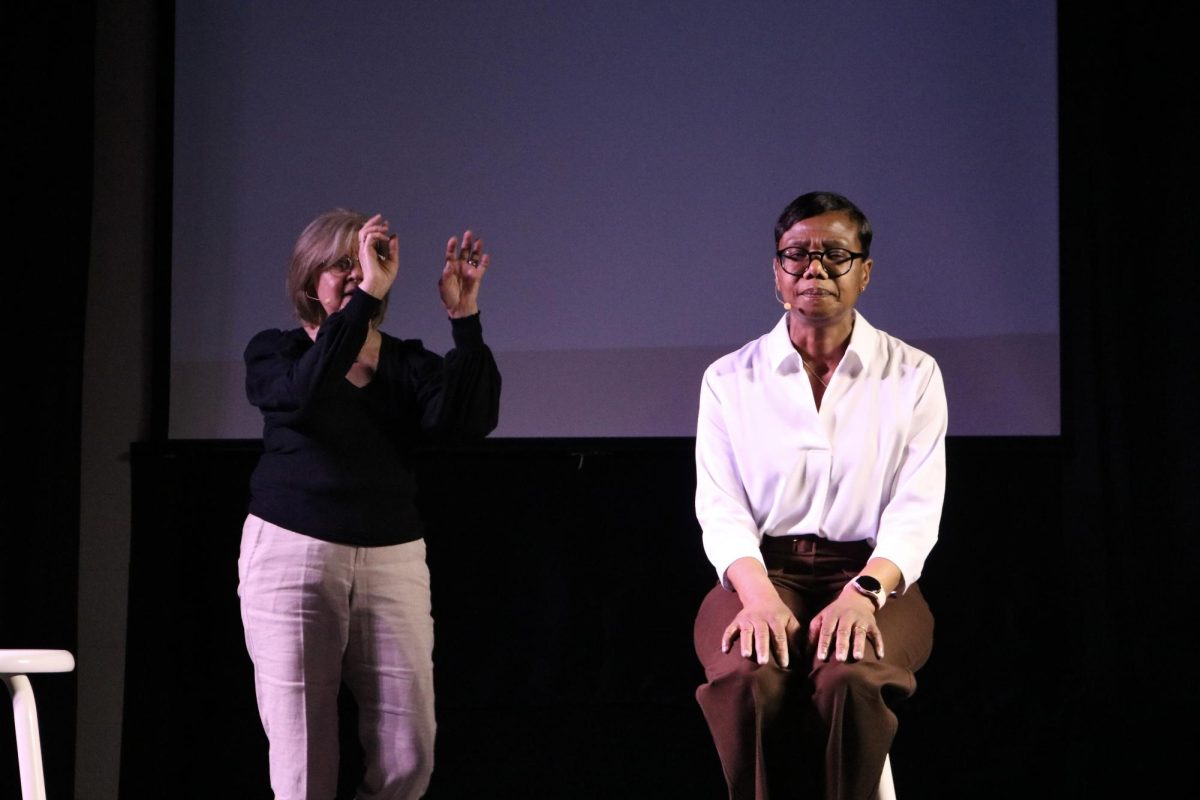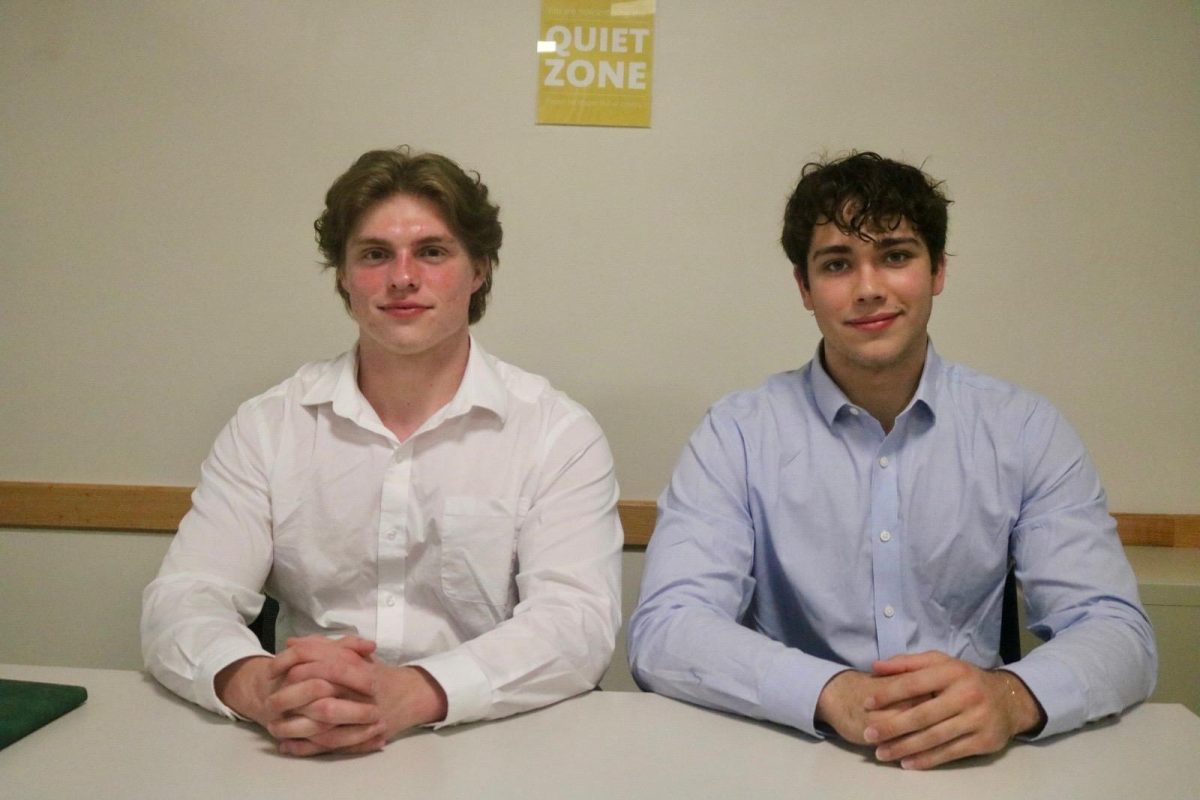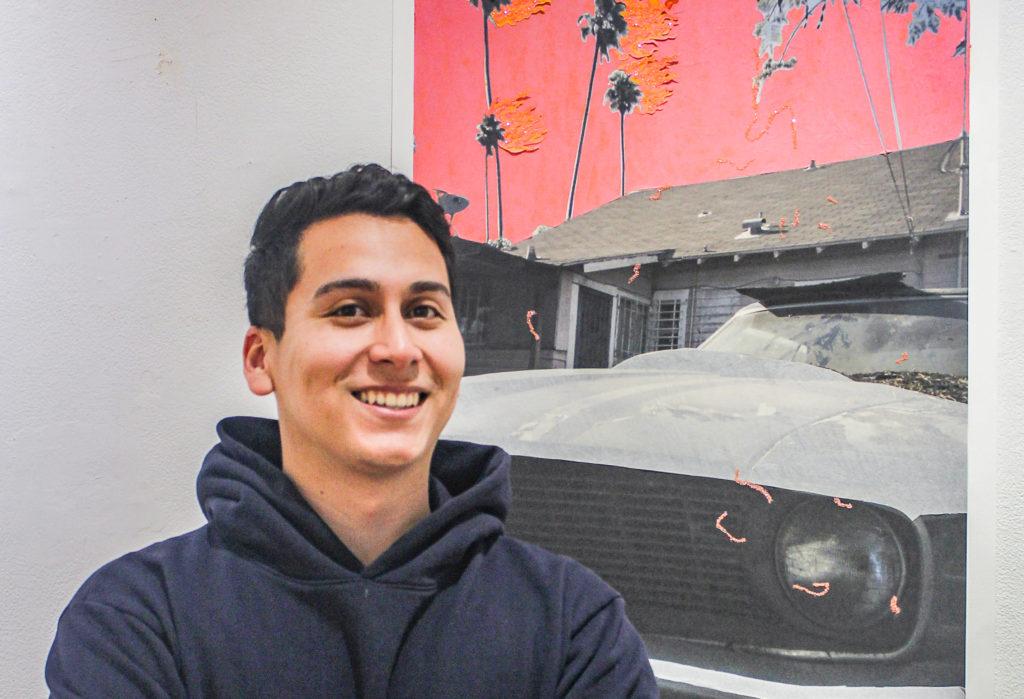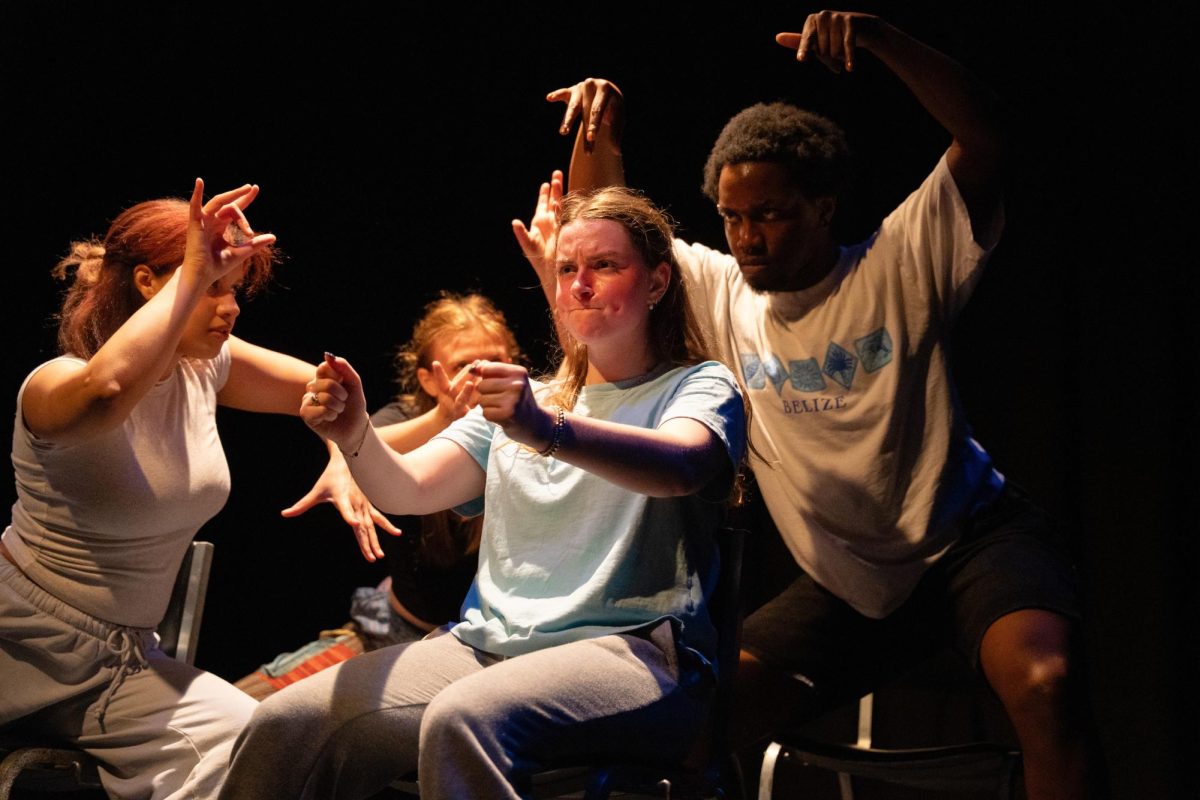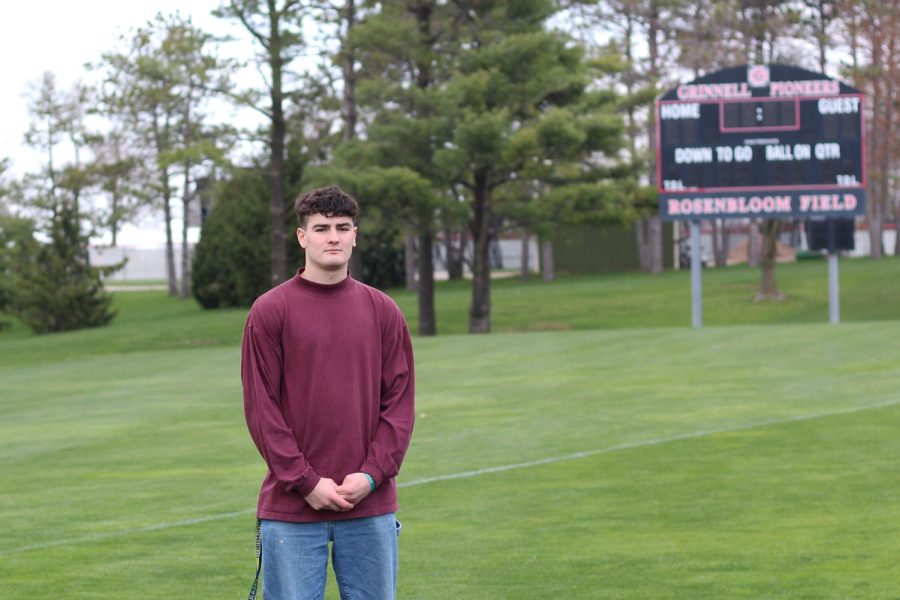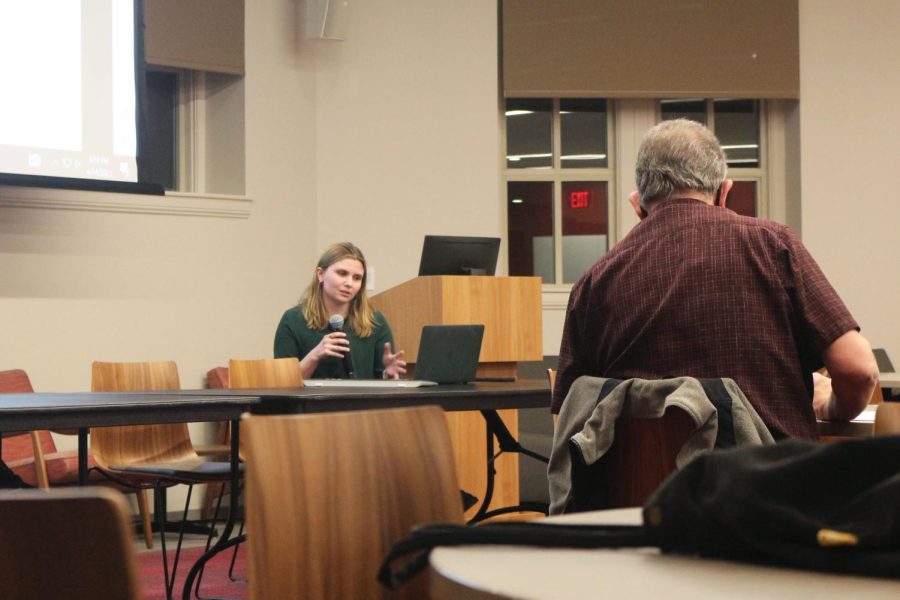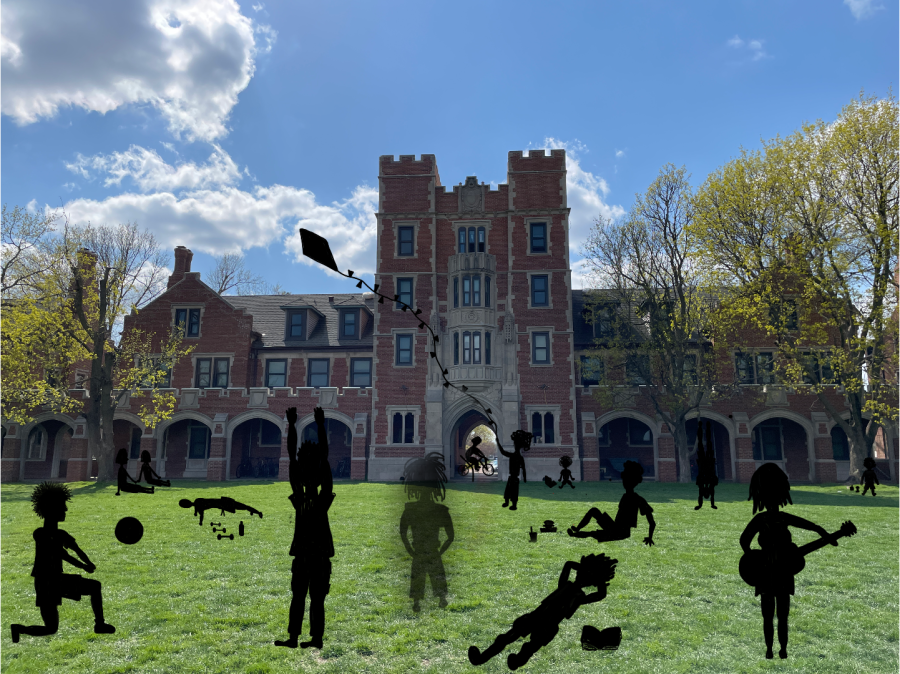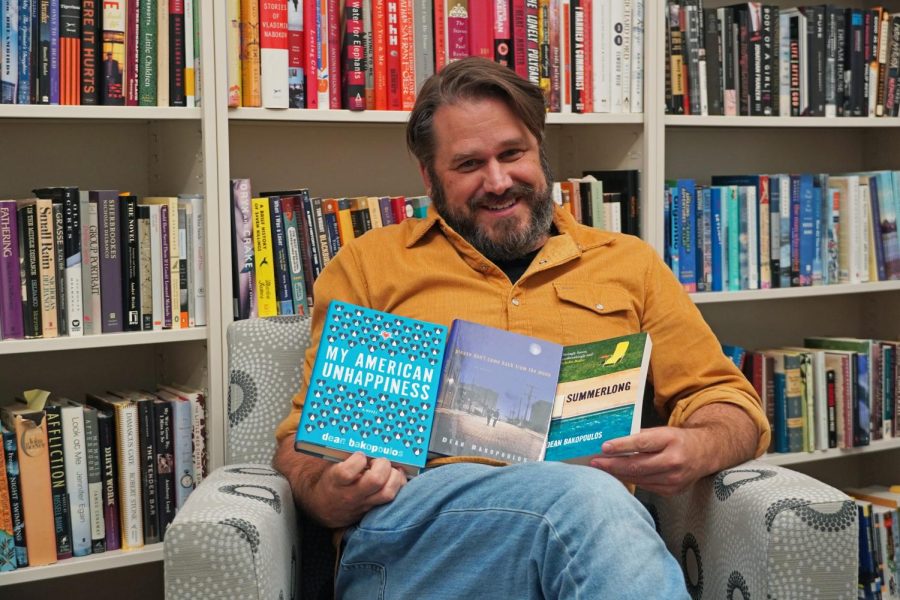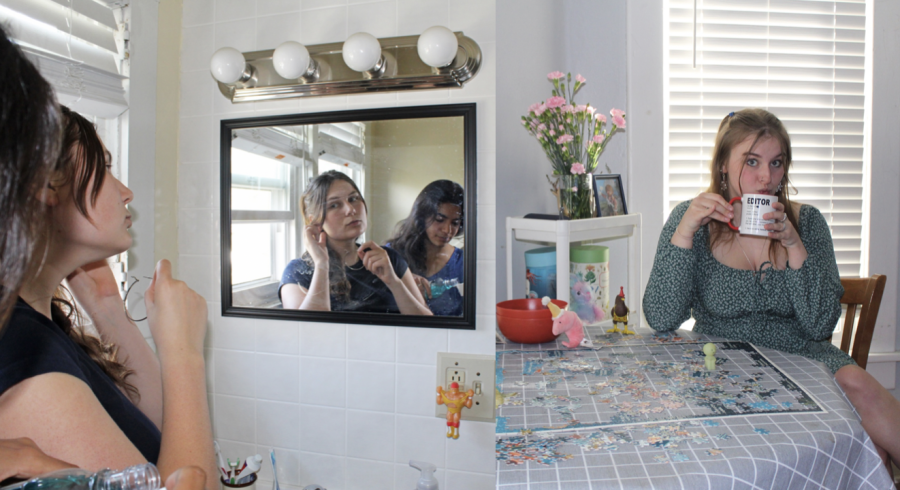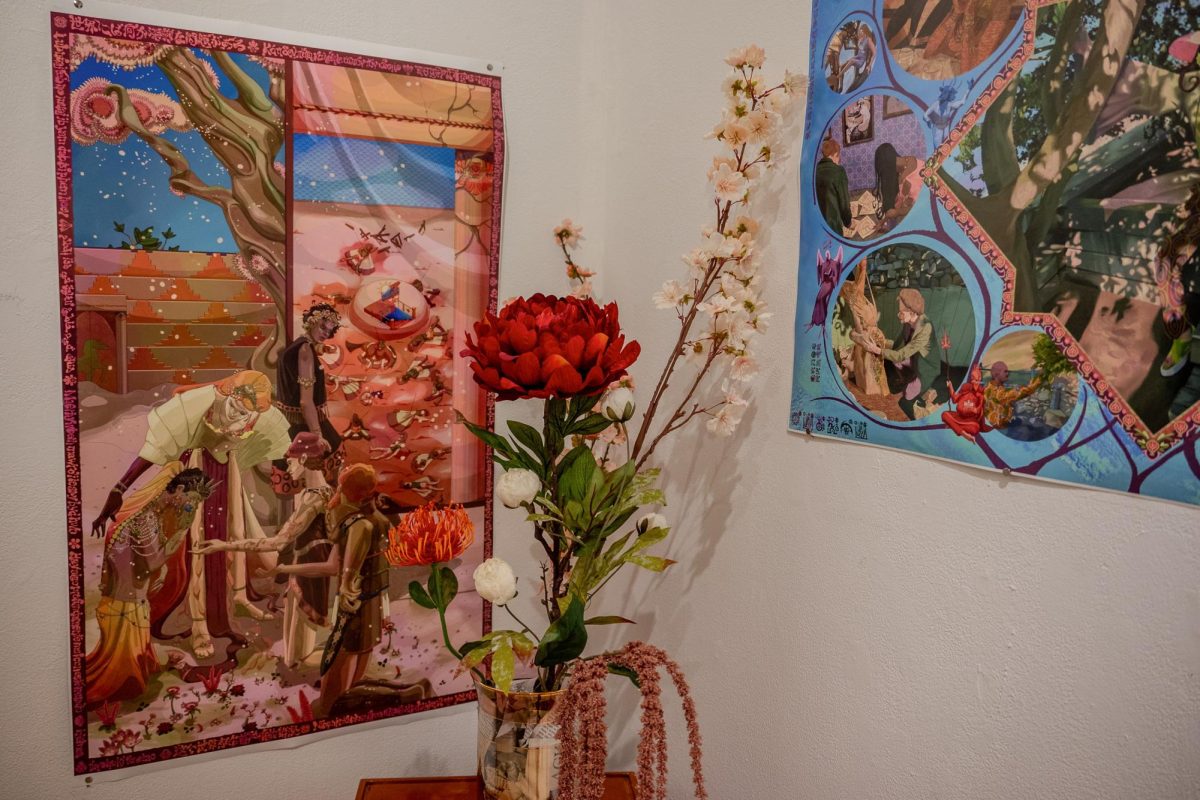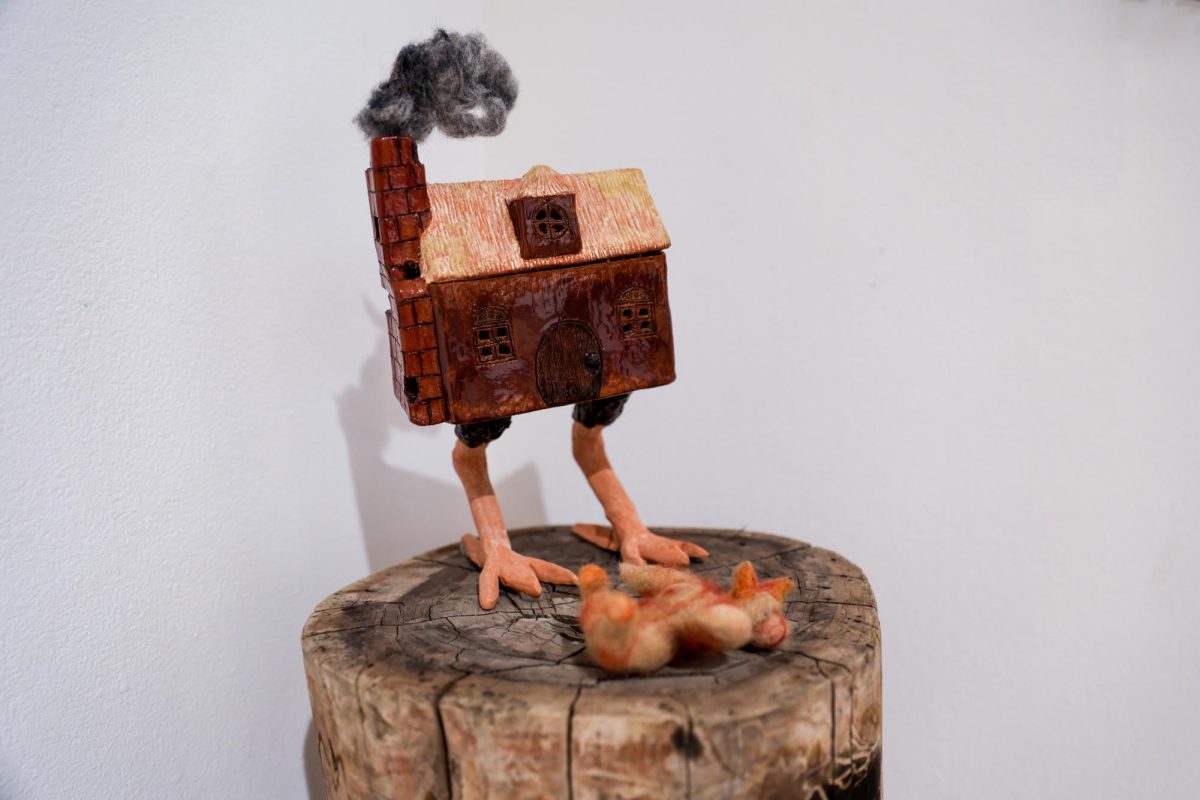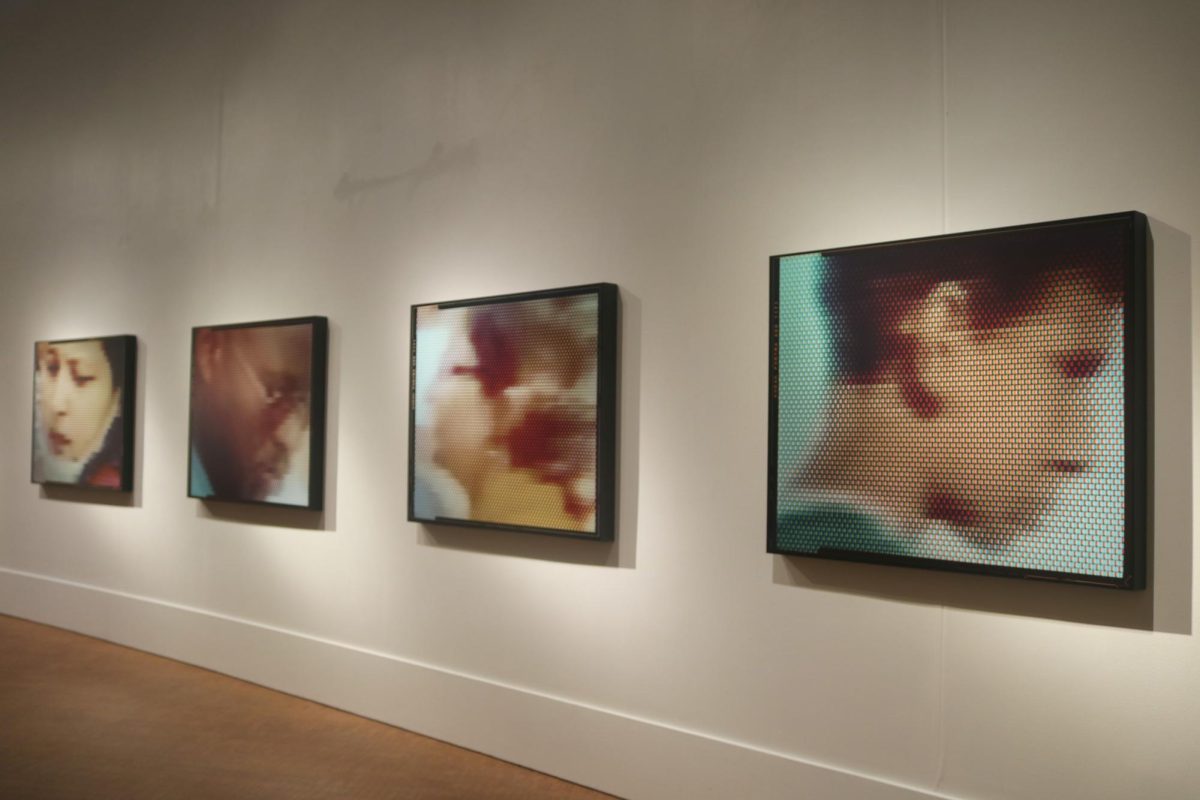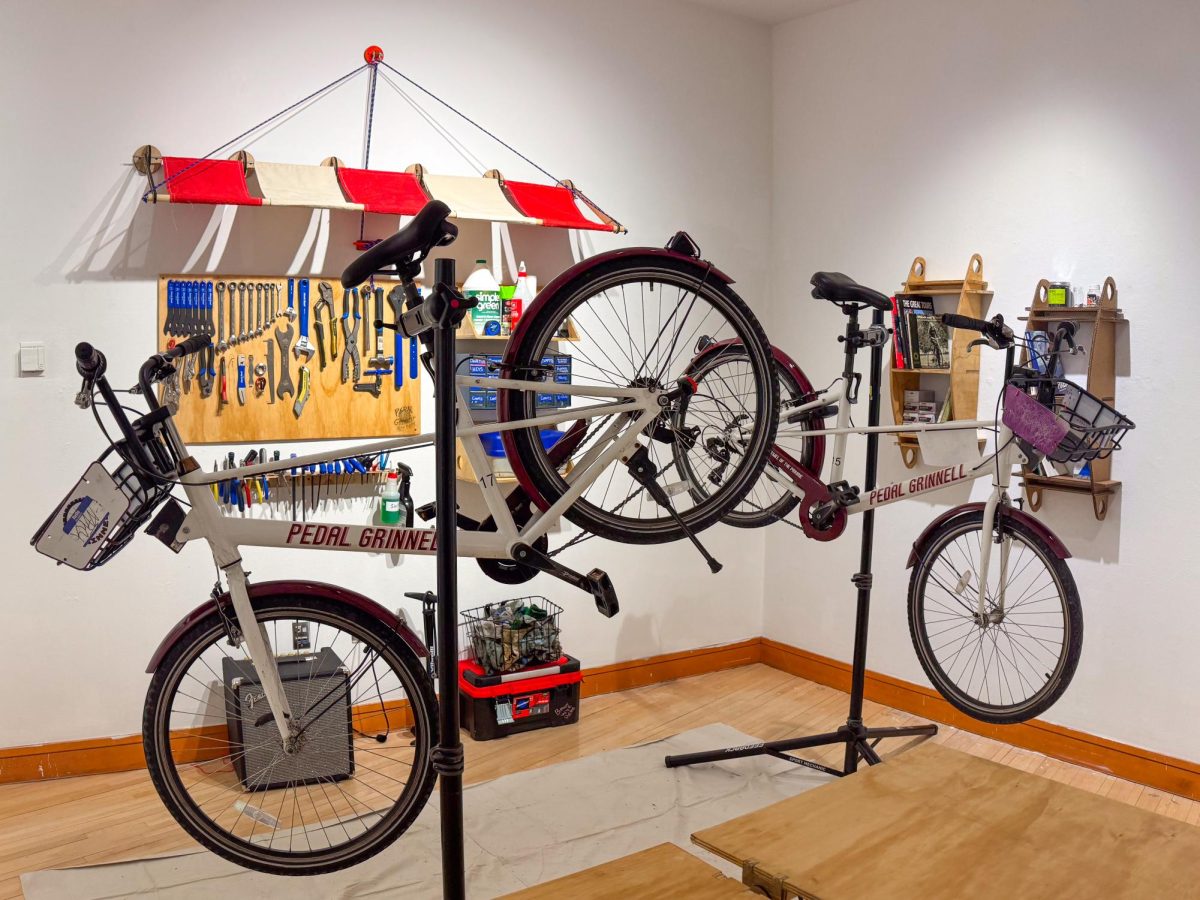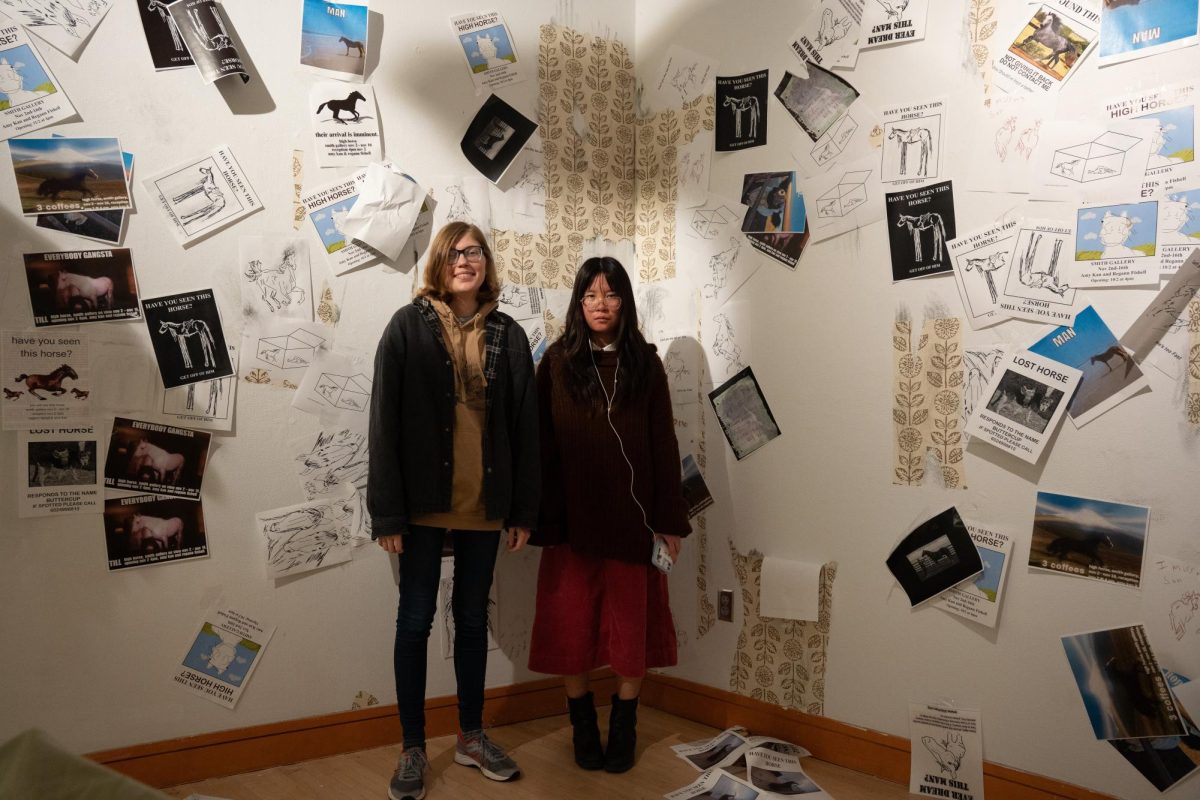This week, Giani Chavez ’20 opened a new exhibit, “Nostalgia Otra,” at the Smith Gallery. The exhibit is a compilation of his artwork that solicits feelings of nostalgia through a combination of evocative photographs, glitter and a little bit of magic.
Chavez made the first display in the gallery, “Gloria and Guillermo,” in 2017, as part of his final project for his drawing class. The display comprised of seven photographs of his parents in Los Angeles in the 70s. The photographs are warm and have a vintage feel to them, almost as if they were shot through a tumblerful of whisky.
Chavez’s inspiration came from an assignment that prompted him to think about an artist who he would like to have a conversation with. Fascinated by an artist who sewed objects onto photographs, Chavez decided to draw over and embellish photographs of his parents.
“Creating this piece was almost like the process of creating memories with people I don’t know. I was spending time drawing on these photographs and making up experiences and memories of things that had never happened, because even though they are my parents, I have no relation to the figures in the photographs,” Chavez said.
Chavez highlighted elements of the scenes photographed by cutting out angels amongst the cloudy LA skies, and drawing images of the Virgin Mary over them – inspired by his parents’ devotion to God. He said he would like to think that they were being protected.
Chavez said, “The arrangement of the pictures was random – I didn’t want it to seem professional or planned out because I wasn’t setting it up to look pretty for anyone. The photographs are too personal for me to advertise them as work.”
The second work on display is his zine, “Volley Boys: Volume 1,” which illustrates his homoerotic take on sports, with a focus on volleyball, a sport he played in high school.
He said, “Flipping through the zine, I realize how raunchy it really is. Which makes sense, because I used porn magazines to gain inspiration for most of my figures. Notice the emphasis on butts – butts are so much fun to draw!”
The drawings range from a celebratory team shower and beach volleyball on pink sand, to coach–student affairs, with an emphasis on male bodies. The zine uses a pastel palette, which adds a tenderness to the erotic drawings.
Chavez said, “The last display is very different from ‘Gloria and Guillermo’ mainly because I could mess around and play with the images a lot more. It wouldn’t feel right tampering with images of my parents, but these were my own.”
In spirit of his newfound playfulness with photography, Chavez expanded his range of materials and decided to experiment with color pencils (which he loves because of the illusion of paint they create on paper), glitter, reflective paper and tissue paper.
In these pieces, he wanted to create art that wasn’t only appealing, but also colorful, scary and weird. He aimed to invoke feelings of nostalgia with disposable cameras, and the grainy and static feel of photographs did just that.
“Lines are my favorite thing. Lines and shapes. That’s why I mask a lot – masking allows the artist to leave his work up for interpretation, and for the ones analyzing the art to make it their own.”
The techniques used by Chavez work together to evoke feelings of nostalgia, and the feeling of looking for something that didn’t happen or remembering something that wasn’t there.
“I clicked this picture of my friends at a birthday party at Gates. It’s titled ‘Who invited you?’ and it’s probably my favorite piece because of the way the figures are positioned. Even though I covered their faces with tissue paper, you can still tell their faces have a ‘What the fuck are you looking at?’ expression on.”
Chavez coins a phrase that resonates with these pieces – Nostalgia Otra – the magic that hides or doesn’t exist in the real world.





